SERBIA,BELGRADE,TOPLIČKA BR.35 OPEN MONDAY TO FRIDAY 12.OO-20.OOh,SATURDAY 13.00-18.00 H,TEL.+381117863439, MOB+381698015004
уторак, 21. јул 2015.
Yugovinyl record store Belgrade
How the compact disc lost its shine

Thirty years ago this month, Dire Straits released their fifth album, Brothers in Arms. En route to becoming one of the best-selling albums of all time, it revolutionised the music industry. For the first time, an album sold more on compact disc than on vinyl and passed the 1m mark. Three years after the first silver discs had appeared in record shops, Brothers in Arms was the symbolic milestone that marked the true beginning of the CD era.
“Brothers in Arms was the first flag in the ground that made the industry and the wider public aware of the CD’s potential,” says the BPI’s Gennaro Castaldo, who began a long career in retail that year. “It was clear this was a format whose time had come.”
As Greg Milner writes in his book Perfecting Sound Forever, the compact disc became “the fastest-growing home entertainment product in history”. CD sales overtook vinyl in 1988 and cassettes in 1991. The 12cm optical disc became the biggest money-spinner the music industry had ever seen, or will ever be likely to see. “In the mid-90s, retailers and labels felt indestructible,” says Rob Campkin, who worked for HMV between 1988 and 2004. “It felt like this was going to last for ever.”
It didn’t, of course. After more than a decade of decline, worldwide CD income was finally surpassed by digital music revenues last year. With hindsight, it’s clear that technological changes had made that inevitable, but almost nobody had foreseen it, because the CD was just too successful. It was so popular and so profitable that the music industry couldn’t imagine life without it. Until it had to.
In 1974, 28-year-old electronic engineer Kees Schouhamer Immink was assigned to the Optics Group of Philips Research in Eindhoven, Holland. His team’s task was to create a 30cm videodisc called Laservision, but that flopped and the focus shifted to designing a smaller audio-only disc. “There were 101 problems to be solved,” Immink says. Meanwhile, in Japan, Sony engineers were working on a similar project. In 1979, Sony and Philips made an unpredecented agreement to pool resources. For example, Sony engineers perfected the error correction code, CIRC, while Immink himself developed the channel code, EFM, which struck a workable balance between reliability and playing time. “We never had people from other companies in our experimental premises,” Immink says. “It was unheard of. Usually you become foes, but in this case we really became good friends, and we’re still friends after so many years. It was remarkable, actually.”
In June 1980, after complicated negotiations in Tokyo and Eindhoven, the so-called Red Book set standard specifications for the compact disc digital audio format. The story goes that the size (12cm) and length (74 minutes, 33 seconds) were changed at the 11th hour when Sony’s executive vice president Norio Ohga insisted that the disc should have enough space for the longest recorded performance of Beethoven’s Ninth Symphony, his wife’s favourite piece of music, but Immink suspects that is a myth. There were so many technical and financial considerations that it’s unlikely such a key decision came down to one woman’s love of Beethoven.
The CD was introduced to the British public in a 1981 episode of the BBC’s Tomorrow’s World, in which Kieran Prendeville mauled a test disc of the Bee Gees’ Living Eyes to demonstrate the format’s alleged indestructibility. It caught the public imagination, but Immink found the claim puzzling and embarrassing because it was clearly untrue. “We should not put emphasis on the fact it will last for ever because it will not last for ever,” he says. “We should put emphasis on the quality of sound and ease of handling.” (Paul McCartney recently recalled the first time George Martin showed him a CD. “George said, ‘This will change the world.’ He told us it was indestructible, you can’t smash it. Look! And – whack – it broke in half.”)
Advertisement
At least Sony and Philips had their own record labels – CBS and Polygram, respectively – so they pressed ahead. CBS released the world’s first commercially available CD, a reissue of Billy Joel’s 52nd Street, in Japan in October 1982. Philips missed the production deadline so the international release was put back to March 1983. It’s hardly surprising that only 5.5m CDs and 350,000 players were sold that year when so few titles were available.
Faced with low manufacturing capacity and high costs, labels trod carefully. Jeff Rougvie, who later worked for the pioneering CD-only label Rykodisc, was in retail at the time. He couldn’t even order individual titles from Sony, only a predetermined box of six: “A couple of classical titles, a couple of rock titles and Thriller. And of course you’d sell Thriller and the other five would sit around. Labels thought it was an audiophile-only product that was going to sell primarily to classical music buyers. They did not see it as a mass-market format.”
Jon Webster, who worked at Virgin Records between 1981 and 1992, remembers that the label’s first batch of CD releases included Mike Oldfield’s Tubular Bells and Phil Collins’s Face Value: albums likely to appeal to affluent early adopters with the means to buy the discs and the expensive players. The first US CD plant, in Terre Haute, Indiana, debuted in October 1984 with Bruce Springsteen’s blockbuster Born in the USA. Enter Dire Straits.
Aware that most consumers didn’t even know what digital audio was, Sony and Philips had launched a promotional campaign on multiple fronts, including advertisements, public demonstrations, product placement, and special promotions for clubs, bars and radio stations. They also courted studio engineers and artists. While analogue loyalists such as Neil Young and Steve Albini railed against translating music into soulless binary code, some high-profile audiophiles felt that this was how music was meant to be heard. On first hearing a CD, the great Austrian conductor Herbert von Karajan memorably declared: “Everything else is gaslight.”
Dire Straits’ Mark Knopfler was an early convert (the second track on Pure, Perfect Sound Forever, the motley 1982 compilation that came free with early CD players, was Dire Straits’ Once Upon a Time in the West). Knopfler insisted on recording Brothers in Arms on state-of-the-art digital equipment, so a promotional partnership was a natural fit. Philips sponsored Dire Straits’ world tour and featured the band in TV commercials with the slogan, attributed to Knopfler: “I want the best. How about you?”
“Brothers in Arms was an iconic release,” says Gennaro Castaldo. “The CD came to symbolise the so-called yuppie generation, representing new material success and aspiration. If you owned a CD player it showed you were upwardly mobile. Its significance seemed to go beyond music to a lifestyle statement.”

Yet the industry was still half-hearted when it came to back catalogue. Rykodisc (“Ryko” is Japanese for “sound from a flash of light”) realised there was big money to be made from consumers upgrading their record collections to CD if enough care was devoted to remastering, programming (ie, bonus tracks) and packaging. The newcomer made big back-catalogue deals with Frank Zappa and David Bowie because the majors weren’t interested. EMI, which had first dibs, told Zappa: “No one will ever buy your stuff on CD.” “There wasn’t a real good understanding on the majors’ side of what some of this stuff was worth,” Rougvie says.
Eventually, even the slowest labels caught on. When Rob Campkin started work at HMV’s flagship Oxford Circus, London, store in summer 1988, the entire CD inventory filled just five five-foot racks. By the following summer, there were almost 40. “In those days, vinyl was very flimsy,” he says. “Cassettes were completely disposable. When CD came along and said this will last you a lifetime,customers really did lap it up. It felt new, it felt shiny, it felt exciting.”
By the 1990s, the CD reigned supreme. As the economy boomed, annual global sales surpassed 1bn in 1992 and 2bn in 1996, and the profit margins were the stuff of dreams. The CD was cheaper than vinyl to manufacture, transport and rack in stores, while selling for up to twice as much. Even as costs fell, prices rose. “It was simple profiteering,” says Stephen Witt, whose new book How Music Got Free chronicles the industry’s vexed relationship with the MP3. “[Labels] would cut backroom deals with retailers not to let the price drop. The average price was $14 and the cost had gotten down almost to a dollar, so the rest was pure profit.”
Jon Webster bristles at this claim. “What’s fair? The public says. Supply-and-demand says. There were ignorant campaigns by the likes of the Sun and the Independent on Sunday saying that these things cost a pound to make. Well, that’s like saying a newspaper costs 3p to produce. That doesn’t include the creativity and the marketing and the money it costs to make the actual recordings.”
Whether or not the prices were justified, CDs sold in their billions and flooded the industry with cash like never before. This enabled labels to invest more heavily in new talent – Campkin suggests that Britpop might not have happened without the CD windfall – but it also funded misguided A&R frenzies, wasteful marketing and excessive pay packets. “In the 90s we were awash with profitability and became fat, to be honest,” says Webster.
Philips and Sony also reaped extraordinary sums from royalties on the discs themselves, including billions of CD-Roms, although none of it reached Immink and his colleagues. Under Japanese law, engineers were entitled to a cut, but their Dutch counterparts had to settle for a salary and a token one-dollar fee for each US patent they filed. “I’m not saying it happened,” Immink says drily, “but what could have happened is you work with a Japanese guy from Sony and he can buy a yacht and the Dutch guy has to be happy with one dollar.”
Bootleg CDs were a danger the industry could get its head around – you could hold one in your hand. What it couldn’t comprehend was the threat of the MP3: the idea that music could transcend physical formats. “That happened for two reasons,” says Witt. “One was they were enjoying unbelievable profits. Two, the studio engineers hated the way the MP3 sounded and refused to engage with it. A lot of artists hated the way it sounded, too.” What the audiophiles didn’t realise was that most consumers couldn’t tell the difference. “What was the audio experience before the compact disc?” says Witt. “It was cheap vinyl or an AM transistor radio on the beach, and MP3 sounds better than either of those.”
Rougvie suggests a third reason: fierce resistance from retailers who, understandably, considered the MP3 an existential threat. “Distributors and record stores were threatening to return every Ryko title they had, just because we were selling 10 or 12 MP3s every week. If that’s what we were feeling, I can only imagine what kind of pushback EMI or Warners were getting.”
Just like their predecessors in Greece in 1982, 90s executives were too busy worrying about the next quarter to consider the next decade. The status quo was perfect, until it wasn’t. “My biggest bugbear about this industry is that they all think short-term,” says Webster. “Nobody ever thinks long-term. All these executives were sitting there being paid huge bonuses on increased profits and they didn’t care. I don’t think anyone saw it coming. I remember the production guy at Virgin saying, ‘In a few years, you’re going to be able to carry all the music you want around on something the size of a credit card.’ And we all laughed. Don’t be ridiculous! How can you do that?”

Only a handful of people predicted the CD’s downfall way back in 1982. German computer engineer Dieter Seitzer, the forefather of the MP3, immediately considered the CD “a maximalist repository of irrelevant information, most of which was ignored by the human ear,” writes Witt. If music could become digital data, he thought, it wouldn’t be bound by the Red Book. Webster remembers one industry Cassandra, Maurice Oberstein – who ran CBS and then Polygram in the UK – making a similar point. “He was the only one who went: ‘We’re making a huge mistake. We’re putting studio-quality masters into the hands of people.’ And he was absolutely right in that respect. Once you made a CD with ones and zeroes it was only a matter of time before that was converted into something that was easily transferable.”
The fall of the CD, like its rise, began slowly. When file-sharing first took off with Napster in 1999 and 2000, CD sales continued to ascend, reaching an all-time peak of 2.455bn in 2000. Tech-savvy, cash-poor teenagers stopped buying them but most consumers didn’t want (or know how) to illegally download digital files on a slow dial-up connection. So the market remained steady, artificially buoyed by aggressive discounting.
It was the 2001 launch of the iPod, an aspirational premium product which made MP3s portable, that turned the tide. “Before that the MP3 was an inferior good,” Witt says. “Once you had the iPod, the CD was an inferior good. It could get cracked or lost, whereas MP3 files lasted.” Not pure, not perfect, but sound for ever.
The compact disc has proved surprisingly tenacious. It still dominates markets such as Japan, Germany and South Africa; it makes for a better Christmas present than an iTunes voucher; and it has some hardcore enthusiasts. Jeff Rougvie is even planning to set up a boutique CD label to reissue rare and out-of-print albums. “It defies conventional wisdom but so did Ryko at the time. There’s an audience.” But, insists Stephen Witt: “It’s dying. It will go obsolete like the floppy disc did. It just always takes a little more time than you’d think.”
Rob Campkin recently opened a record shop in Cambridge called Lost in Vinyl. He only stocks a handful of the discs that were once the most lucrative product in the history of music. “Margins are very slim,” he says. “I’d have to sell three or four CDs for every one copy on vinyl. It wouldn’t be worth my while.”
How Music Got Free by Stephen Witt is published by Bodley Head on 18 June.
Kako je nemačka muzika uticala na svetske trendove?
Nemački bendovi i muzičari inspirisali su umetnike iz celog sveta i oblikovali mnoge muzičke stilove, kao na primer elektro-pioniri Kraftverk, koji u Berlinu upravo počinju niz koncerata, ali oni nisu jedini.
Izvor: Tanjug
Tu je i pank, ali i umetnici kao što su Aba, Elton Džon, Flitwud Mek. Onda na scenu stupaju Nemci. U Zapadnom Berlinu sastaju se umetnici koji su uglavnom posvećeni elektronskom zvuku, koji istražuju mogućnosti svojih sintisajzera, a jedna od tih grupa zove se Tangerine Dream.
Za bubnjevima sedi izvesni Klaus Šulce, koji je tokom vremena otkrio svoje interesovanje za sintetički zvuk i ubrzo se posvetio sopstvenim projektima. Godine 1972. izdaje prvi album "Irrlicht" kojim postavlja naglavčake sve što se do tada moglo čuti.
Šulc svoje delo naziva "kvadrofonična simfonija za orkestar i električne mašine". Ritam je u pozadini, odjednom su tu zvučni pejzaži i psihodelični zvučni tepisi.
Sve više muzičara, širom sveta, zainteresovalo se za ovog čudaka iz Nemačke. Tako je, na primer, došlo do saradnje sa poznatim japanskom "elektroničarem" Stomuom Jamašitom.
Njegov album "Gonastao" je pod velikim uticajem Šulcea. Zvuk Klausa Šulcea je početak nove ere u muzici i on će se razvijati dugi niz godina i biti osnova za mnoge današnje stilove elektronske muzike - od ambijenta do transa i tehna. Za mnoge je Šulce čak "Kum tehna".
I u Dizeldorfu su dva muzičara sa sintisajzerima u potrazi za novim muzičkim horizontima: Ralf Hiter i Florijan Šnajder koji osnivaju duo Kraftverk. Oni angažuju nekoliko muzičara, prave dva albuma koji odmah privlače pažnju.
"Veliki prasak" se dešava izlaskom trećeg albuma "Autoban" koji je proizvoden isključivo elektronski i smatra se prvim elektro-pop albumom.
Francuski elektronski duo Daft pank doveo je do savršenstva ideju Kraftverka - da se na sceni predstavljaju kao "ljudi-mašine".
Duo Kan je osnovan 1968. u Kelnu, na basu jedan od učenika Štokhauzena, Holger Čukai, i na bubnjevima džez muzičar Jaki Libecajt.
Od samog početka je bilo jasno da neće svirati uobičajeni rokenrol, pošto napuštaju kalupe, improvizuju, ugrađuju etno muziku, kasnije i razne zvuke i elektroniku.
U Nemačkoj ta muzika prolazi samo kod avangarde, a na tržištu se teško probija.
Tek 1975. napravljen je ugovor sa jednom velikom izdavačkom kućom i tek posle mnogo godina, muzičari iz celog sveta otkrivaju Kan.
Indi i alternativni bendovi poput Portished, Radiohed, Sonik jut, navode muzičare iz Kelna kao važan impuls za svoje stvaralštvo.
Trijumf benda Skorpions počinje sredinom sedamdesetih. Prvo su osvojili Englesku, nastupajući kao predgrupa velikih rok bendova kao što su Kis ili Juraja hip.
Album "Virgin Killer" je 1976. u Japanu bio zlatan, nakon čega je rasprodata i Nipon turneja. Tri godine kasnije, bend je pokušao da se probije u Sjedinjenim Američkim Državama, nastupom na festivalu pred 60.000 ljudi - pored AC/DC i Aerosmita.
Na prvoj svetskoj turneji Skorpionsa, 1982. kao predgrupa nastupa Ajron mejden.
Album "Love at first Sting" katapultirao je bend 1984. godine na nebo "metal scene".
Najpoznatija balada "Wind of Change" je postala zvučni simbol pada Berlinskog zida i kraja Hladnog rata.
Širom sveta ima obožavalaca "nove nemačke tvrdoće". Ramštajn je samo u SAD prodao više od dva miliona primeraka albuma "Čežnja" (Sehnsucht). Dva puta su nominovani za Gremi.
Ramštajn je za mnoge konačno nešto zaista nemačko. Sviđa im se teški zvuk, mada tekstove isprva ne razumeju. A onda fanovi uče i na uvek rasprodatim koncertima gromko pevaju: "Achtung! Verboten!" (Pažnja! Zabranjeno) ili "Heirate mi" (Udaj se za mene).
Mnogi drugi muzičari iz Nemačke smatraju se posebno uticajnim i inspirativnim. Dipeš mod se intenzivno bavio zvukom benda Einsturzenden Neubauten - eksperimentalnim muzičkim projektom iz Berlina.
Bend oko pevača Bliksa Bargelda koristi više otpad nego instrumente za stvaranje i oblikuje takozvani industrijski zvuk.
Sven Fet je jedan od prvih tehno di-džejeva. Tehno iz Nemačke pojavio se u ranim devedesetim i brzo je osvojio ceo svet, međutim koncept ne potiče iz Nemačke. U novom pravcu su spojeni različiti muzički stilovi poput Chicago House, Electronic Body Music ili elektronska avangarda.
Sven Vet je sve to iskombinovao i još je jedan od najbolje plaćenih di-džejeva na svetu.
Frank Farijan je sedamdesetih godina svetu donosio disko zvuk. Prvo je sa Boni M osvojio međunarodnu publiku, a potom pod ugovor uzima američku pevačicu Donu Samer i proizvodi sa njom nekoliko disko klasika.
Krajem osamdesetih, on i njegov pop duo Mili Vanili postižu ogroman međunarodni uspeh i čak su dobili i Gremi. Međutim, potom se ispostavilo da je sve bilo laž i prevara: Mili Vanili su pevali na plejbek, a Gremi im je oduzet.
IN THE MOON CAGE mozete kupiti u Yugovinylu
The new label has dug out music from the Serbian electronic music pioneer's vast archive.

A new label called Offen Music will launch with In The Moon Cage, a record from Serbian artist Rex Ilusivii.
Offen Music is the project of Vladimir Ivkovic, a resident DJ at Düsseldorf's Salon Des Amateurs. Ivkovic's first move with Offen is to shine some light on Rex Ilusivii, real name Mitar Subotić, who died after a fire in his studio in Brazil in 1999. (He also recorded music as Suba.) Ivkovic has assembled an archive of Subotić's music made between 1980 and 1991, much of which has never been released. In The Moon Cage, which dates back to 1988, will be presented as a double 12-inch with six experimental electronic compositions. You can listen to clips over at Rush Hour.
Tracklist
01. Moon Cage I
02. Moon Cage II
03. Moon Cage III
04. Moon Cage IV
05. Moon Cage - Annex 01
06. Moon Cage - Annex 02
Offen Music will release In The Moon Cage in June 2015.
Offen Music is the project of Vladimir Ivkovic, a resident DJ at Düsseldorf's Salon Des Amateurs. Ivkovic's first move with Offen is to shine some light on Rex Ilusivii, real name Mitar Subotić, who died after a fire in his studio in Brazil in 1999. (He also recorded music as Suba.) Ivkovic has assembled an archive of Subotić's music made between 1980 and 1991, much of which has never been released. In The Moon Cage, which dates back to 1988, will be presented as a double 12-inch with six experimental electronic compositions. You can listen to clips over at Rush Hour.
Tracklist
01. Moon Cage I
02. Moon Cage II
03. Moon Cage III
04. Moon Cage IV
05. Moon Cage - Annex 01
06. Moon Cage - Annex 02
Offen Music will release In The Moon Cage in June 2015.
Documentaries about vinyl and record collecting
Although there are numerous great shorts floating around on YouTube focusing on vinyl culture, digging and record collecting, here is a list of some must-see feature length documentaries and mini-series that capture all that it means to be a vinyl fanatic and look at record collecting from every possible angle.
Records Collecting Dust (2015, 57 min)
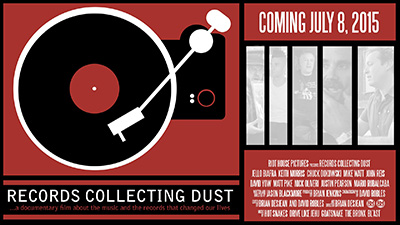
Written and directed by San Diego based musician and filmmaker Jason Blackmore, Records Collecting Dust documents the vinyl record collections, origins, and holy grails of alternative music icons Jello Biafra, Chuck Dukowski, Keith Morris, John Reis, and over thirty other underground music comrades. "...a documentary film about the music and records that changed our lives"
Vinyl (2000, 180 min)
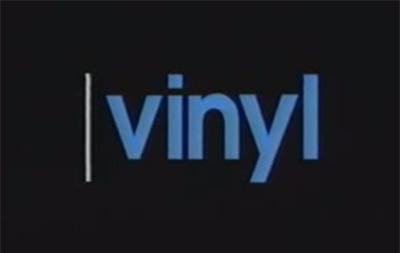
A documentary by canadian filmmaker and record collector Alan Zweig who investigates the wacky world of record collecting and tries to get to the bottom of his obsession. In the film, Zweig seeks not to talk to people who collect records to discuss music, but rather to discuss what drives someone to collect records in the first place. Zweig spends a large portion of the film in stylized self-filmed "confessions", where he expounds on his life in regard to record collecting, feeling it has prevented him from fulfilling his dreams of a family. Between others, collectors who he taks to include a car wash employee who claims to own over one million records and claims to have memorized the track listing of every K-Tel collection he owns, a government employee who refuses to organize his collection because he doesn't want people to come over and a man who threw out his large record collection rather than sell or give it away because he didn't want anyone else to own it.
Sound it Out (2011, 75 min)
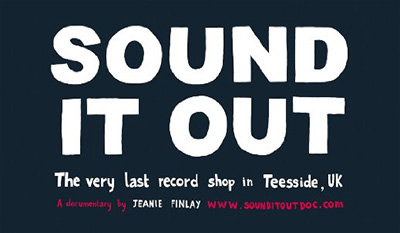
A documentary portrait of the very last surviving vinyl record shop in Teesside, North East England. A cultural haven in one of the most deprived areas in the UK, the film documents a place that is thriving against the odds and the local community that keeps it alive. Directed by Jeanie Finlay who grew up three miles from the shop. A distinctive, funny and intimate film about men, obsession and the irreplaceable role music plays in our lives.
Our Vinyl Weighs a Ton: This Is Stones Throw Records (2013, 94 min)
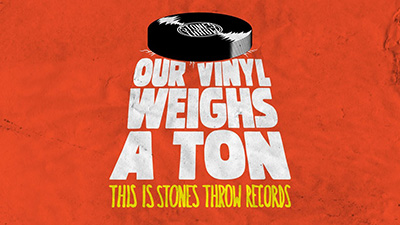
Our Vinyl Weighs A Ton is a feature-length documentary about avant-garde Los Angeles-based record label Stones Throw Records. The film weaves together rare concert footage, never-before-seen archival material, inner-circle home video and photographs and in-depth interviews with the artists who put Stones Throw Records on the map. Our Vinyl Weighs A Ton gives an exclusive look into the label's left-of-center artists, history, culture, and global following. The film features exclusive interviews with Kanye West, Snoop Dogg, Common, Questlove, Talib Kweli, Mike D (The Beastie Boys), Tyler the Creator, and many more.
Scratch (2001, 92 min)
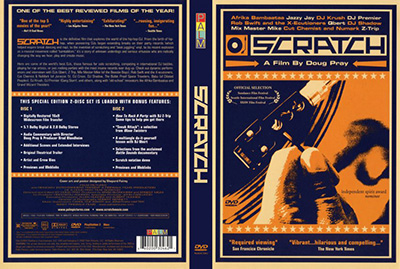
Directed and edited by Doug Pray, the film explores the world of the hip-hop DJ from the birth of hip-hop when pioneering DJs began extending breaks on records, to the invention of scratching and beat juggling, to the more recent explosion of turntablism. Throughout the documentary, many artists explain how they were introduced to hip-hop while providing stories of their personal experiences. While Scratch is not a movie about vinyl collecting, it's a definitive chronicle of the history, theory, and practice of turntablism.
I Need That Record (2008, 77 min)
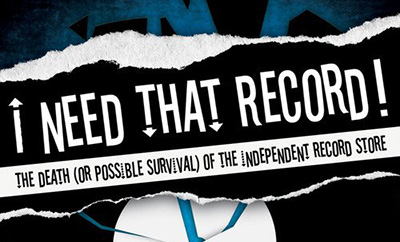
A documentary feature by Brendan Toller, examining why over 3000 independent record stores have closed across the U.S. in the past decade. Greedy record labels, media consolidation, homogenized radio, big box stores, Ecommerce, shoddy "stars" pushed by big money, and the digital revolution all pose threats on the very well being of our favorite record stores and the music industry at large. Will these stores die? Will they survive?
Desperate Man Blues (2003, 52 min)

The documentary focuses on an eccentric record collector, Joe Bussard, who has devoted his life to preserving the raw music of the American South, including blues, hillbilly, bluegrass, gospel and jazz. In combing the region for masterpieces primarily from the 1920s and '30s, Bussard has amassed more than 25,000 records. Bonus features include rare footage of John Lee Hooker performing "Never Get Out of These Blues Alive" and Son House with "Death Letter Blues.".
Vinylmania: When Life Runs at 33 Revolutions Per Minute (2012, 75 min)
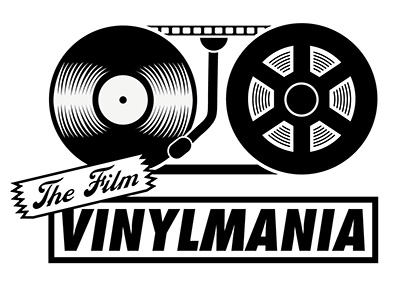
A trip into the grooves, Vinylmania is a 75 minute feature length documentary about an object that has never lost its soul: the vinyl record. An epic love story, the film is filled with fascinating characters and internationally recognized artists including Philippe Cohen Solal (Gotan Project), Winston Smith (Dead Kennedys, Green Day record sleeve artist), Peter Saville (Joy Division, New Order record sleeve artist) and Dj Kentaro (2002 DMC World DJ Champion). Devotion, ecstasy, infatuation, agony - all feelings that the director of the film, Paolo Campana, has experienced from childhood and shares with like-minded record collectors, Djs, musicians and artists (the said vinylmaniacs) in the documentary. Set in 11 different cities worldwide, the director sets out on a global road trip to find out what role vinyl records play in the 21st century.
Last Shop Standing: The Rise, Fall And Rebirth Of The Independent Record Shop (2012, 50 min)
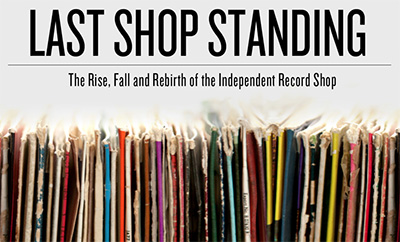
Last Shop Standing inspired by the book of the same name by Graham Jones takes you behind the counter to discover why nearly 2000 record shops have already disappeared across the UK. The film charts the rapid rise of record shops in the 1960's, 70's and 80's, the influence of the chart, the underhand deals, the demise of vinyl and rise of the CD as well as new technologies. Where did it all go wrong? Why were 3 shops a week closing? Will we be left with no record shops with the continuing rise of downloading? Hear from over 20 record shop owners and music industry leaders as well as musicians including Paul Weller, Johnny Marr, Norman Cook, Billy Bragg, Nerina Pallot, Richard Hawley and Clint Boon as they all tell us how the shops became and still are a part of their own musical education, a place to cherish and discover new bands and new music.
When Albums Ruled The World (2013, 90 min)
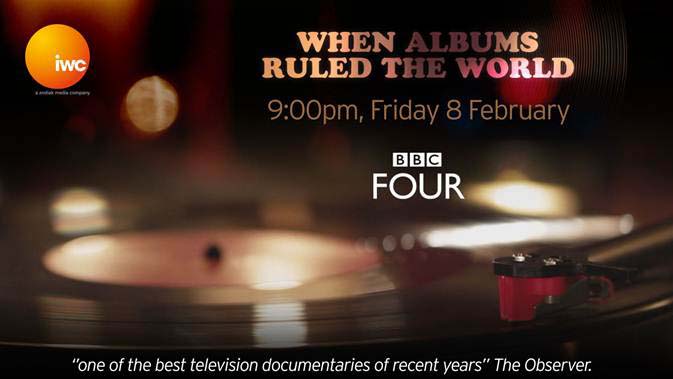
A BBC documentary that tells the story of the long playing album - the unsung hero in popular music's epic history. Between the mid-1960s and the late 1970s, the long-playing record and the albums that graced its grooves changed popular music for ever. For the first time, musicians could escape the confines of the three-minute pop single and express themselves as never before across the expanded artistic canvas of the album. The LP allowed popular music become an art form - from the glorious artwork adorning gatefold sleeves, to the ideas and concepts that bound the songs together, to the unforgettable music itself. Built on stratospheric sales of albums, these were the years when the music industry exploded to become bigger than Hollywood. From pop to rock, from country to soul, from jazz to punk, all of music embraced what 'the album' could offer. But with the collapse of vinyl sales at the end of the 70s and the arrival of new technologies and formats, the golden era of the album couldn't last forever. With contributions from Roger Taylor, Ray Manzarek, Noel Gallagher, Guy Garvey, Nile Rodgers, Grace Slick, Mike Oldfield, Slash and a host of others, this is the story of When Albums Ruled the World.
Red Beans & Rice (2010, 60 min)
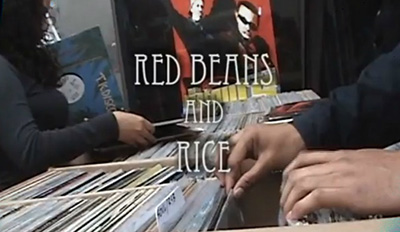
A film which tells of the world of record collecting as seen through the eyes of the collectors themselves. Listen as they share there thoughts on the subject of vinyl digging as you enter the realm of the last true culture where music is key and collecting is a part of life. Rather more upbeat immersion in stacks of wax as an array of hardcore diggers trace the roots of their vinyl love and show off prize obscurities while the camera lovingly pans across musty record-shop basements and apartment walls covered with floor-to-ceiling shelf units.
Red Beans & Rice 2: Audio Vibes (2011, 60 min)
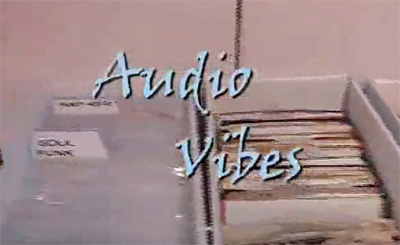
The part two of Red Beans & Rice spins up another cool set of spine-tingling tales from the world of the record collector. Look. listen and learn from our latest bunch of vinyl addicts as they wax poetic over the captivating hobby known around the world today as "vinyl digging."
John Peel's Record Box (2005, 51 min)
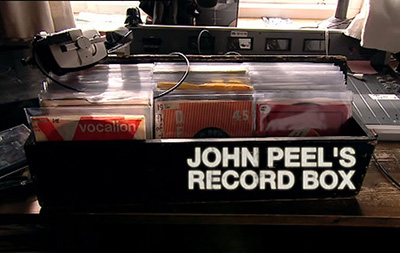
A documentary film made by Elaine Shepherd, for BBC's Channel 4. It is about a small private collection of the British radio DJ John Peel who died in 2004 at the age of 65. His archive contained more than 100,000 vinyl records and CDs. This collection contains 143 singles - some of them doublettes - stored in a private wooden box representing some of his own favourites. According to the documentary, there are no singles by Peel's favorite group, The Fall, because he kept them in a separate box. The film features interviews with John's wife Sheila Ravenscroft, radio DJs and artists like Mary Anne Hobbs, Sir Elton John, Ronnie Wood, Roger Daltrey, Fergal Sharkey, Jack White, Michael Palin and Miki Berenyi.
Record Store Day: The Documentary (2011, 28 min)
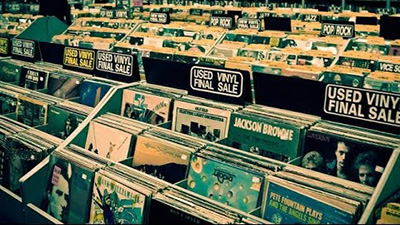
In an age of digital downloads, the documentary looks at why fans still love and need to love vinyl records. The film uses archive footage and current interviews with leaders of music explaining an audiophile's holiday and some of their favorite records and what Record Store Day means to them.
Secondhand Sureshots (2008, 30 min)
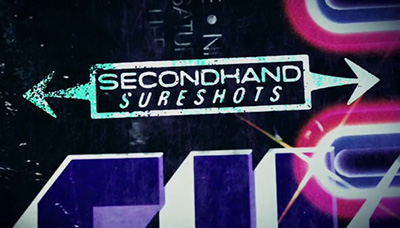
This documentary film by the dublab.com creative collective is an experiment in sound recycling. Secondhand Sureshots features four amazing, LA-based beat makers: Daedelus, J-Rocc, Nobody and Ras G in a secret mission to create new musical magic from the dusty remains of thrift store vinyl. Shot on location at Out of the Closet Thrift Stores and bedroom studios in Los Angeles.
Re-Vinylized (2011, 30 min)
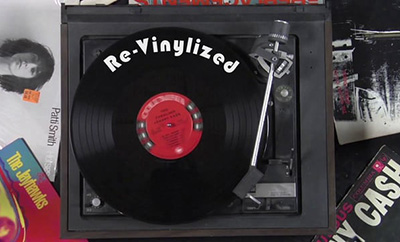
The film celebrates the culture of independent record stores while examining the effects of downloading and the recent resurgence of vinyl record sales. The documentary profiles a number of Chicago's independent record stores, and features interviews with store owners, employees and customers as well as insightful commentary from national music critics Jim DeRogatis and Greg Kot (of National Public Radio's "Sound Opinions" program).
Crate Diggers mini-series by Fuse
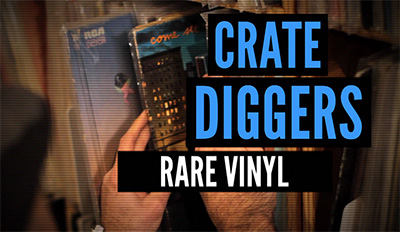
The award-winning digital series by Fuse, profiles musicians through the thing they hold most dear - their record collections. New episodes every other Wednesday!
What's In My Bag? mini-series by Amoeba Music
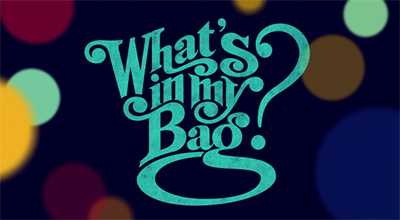
Award-winning series featuring artists and tastemakers sharing what they found shopping at Amoeba.
The 12 Best Things In Belgrade, Serbia Every Music Fan Should Do
28 Mar 2014 / Corey Tonkin
Serbia’s most recent difficult history dates back to the 90s where the country suffered through the initial ramifications of the breakup of Yugoslavia, civil war, high inflation and high unemployment rates.
For some reason the Western world’s idea of Serbia hasn’t fully moved on from that turbulent period.
Despite this Serbia’s local music and arts scene has flourished in the years since.
When the 1999 NATO bombs dropped down on Yugoslavia Belgrade still managed to have its own huge outdoor concerts in city squares and on bridges, just as the city’s nightclubs started operating during the daytime.
With that period behind them, Belgrade may not be as architecturally as splendid as its European counterparts, but its nightlife rivals all.
There are countless nightclubs citywide and on the metropolis famous splavs, that is music venues on barges for the uninitiated.
Nightclubs reverberate everything form house music to progressive, tech house and Serbia’s own turbo-folk, which incorporates folk music with electronic and pop elements.
While a wide variety of other genres are represented across the board, there’s an underground scene that has emerged from the scars of the past.
Canadian bred, but Serbian born producer Ensh takes The 405 through his birth place’s music scene, detailing a “myriad of small clubs, cultural centres and re-appropriated spaces. Like Fest, KC Grad and Inex Film”.
Primarily though he introduces outsiders to an establishment called BIGZ, which is an multilevel abandoned publishing house that has been transformed into a creative centre for artists.
The building is home to underground venues, practice spaces and recording studios.
Ensh’s most interesting statement though, is where he describes the artists that make up the creative scenes in Belgrade.
“No one involved in the Belgrade alternative scene plays music because they have any pretense of “making it”, they just want to play music. It is that very same passion that has drawn in DIY tours from all over Europe to Belgrade. It just feels like the right place to be. There is a combination of naiveté, devotion and wonder that would give any musical cynic a glimpse of hope.”
As both Ensh and the city’s large number of thriving nightclub’s demonstrate Belgrade’s music scene is thriving on a number of fronts.
Whether you’re interested in dancing the night away or immersing yourself into avant-garde culture the Serbian capital is one of Europe’s must-visit music destinations.
Read on for the 12 things every music fan must do in the Serbian capital.
Experience Exit Festival
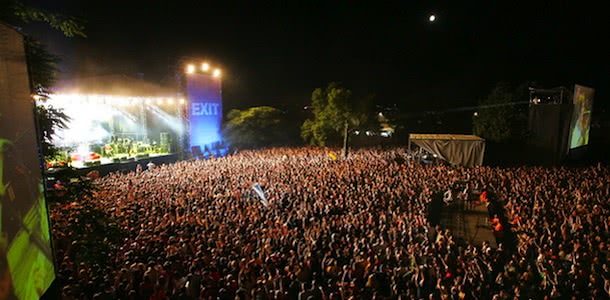 Having
just won the ‘Best Major European Festival’ award at the 2014 EU
Festival Awards, Serbia’s biggest music event is continually recognised
as one of the greatest music festivals in the continent. Despite it
being held outside of Belgrade in Novi Sad the event is too integral to
the country’s music scene not to be included here. Its foundations are
important to note as well. Founded in 2000 as a student movement
fighting for democracy, it still to this day is an important promoter of
social equality. Held over four days Exit books big name acts such as
Arcade Fire, Portishead, Guns N’ Roses, Bloc Party, Faith No More, Lily
Allen, The Prodigy, Arctic Monkeys, Sex Pistols and Pulp to name just a
few.
Having
just won the ‘Best Major European Festival’ award at the 2014 EU
Festival Awards, Serbia’s biggest music event is continually recognised
as one of the greatest music festivals in the continent. Despite it
being held outside of Belgrade in Novi Sad the event is too integral to
the country’s music scene not to be included here. Its foundations are
important to note as well. Founded in 2000 as a student movement
fighting for democracy, it still to this day is an important promoter of
social equality. Held over four days Exit books big name acts such as
Arcade Fire, Portishead, Guns N’ Roses, Bloc Party, Faith No More, Lily
Allen, The Prodigy, Arctic Monkeys, Sex Pistols and Pulp to name just a
few.Visit A Splav
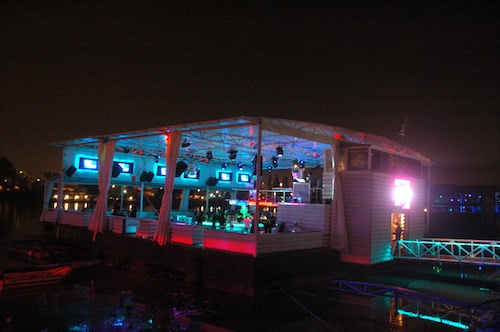
Splav literally translates to raft in English, although it’s known more for being a barge restaurant than a floating device. These restaurants are typically located along the Sava and Danube rivers, which define the city. Most turn into nightclubs by night with no cover charge on entry. The music at the splav’s range from folk, pop and rock acts to dance inspired DJs. You can’t visit Belgrade without hopping aboard at least one of these floating restaurants or nightclubs.
Pick up a record at Yugovinyl
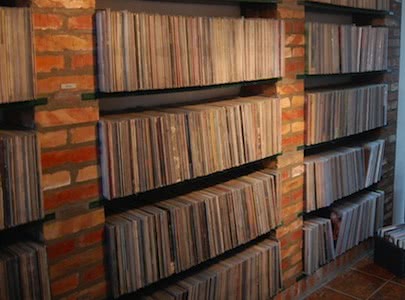 Toplička 35 Zvezdara
Toplička 35 ZvezdaraA favourite amongst locals this record store is true to its name. Selling a variety of vinyl from ex Yugoslavia with titles from major and minor labels Yugovinyl provides a fascinating insight into the music of Yugoslavia. There’s even Yu editions of international legends such as The Beatles, Queen, The Rolling Stones and Elvis Presley.
Witness Svi Na Pod! Live

At the forefront of the ‘New Serbian Scene’ – a collective of pop/rock artists formed after the year 2000 – this seven-piece outfit has a large following in the ex-Yu region. With their name translating to ‘Everyone One The Floor!’ it’s not hard to distinguish just what the band’s dancefloor aims are. The pop ensemble were voted best band in their local music scene in 2009 and were awarded best local concert in 2011 by Serbian website Popboks
Have a late night at 20/44
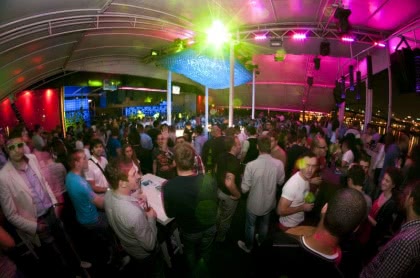 Toplička 35 Zvezdara Sava River dock
Toplička 35 Zvezdara Sava River dockIf there’s any splav nightclub you should visit first it’s this one. Situated on the banks of the Sava River 20/44 is open all year round. The sound system echoes a broad range of sounds from Detroit techno to soul, disco, funk, house and dubstep. The venue is most famous for its ‘Disco Not Disco’ nights which allows the city’s best DJs to experiment and surprise their audience. Its cheap entry and you can also get a pretty great view of old Belgrade from the splav in summer.
Take A Walk Down Skadarska Street

Tourists venture down this street because it is filled with quality restaurants and cafes in the heart of old Belgrade. Paved with cobblestones and characterised by buildings with impressive murals you won’t remember a more lively daytime Belgrave than when you’re down Skadarska. You’ll also experience plenty of live bands and string orchestras along your walk. Just remember to stop off for some Serbian cuisine while your walking down this pedestrian street.
Buy vinyl from The Wall
The Wall, Balkanska 29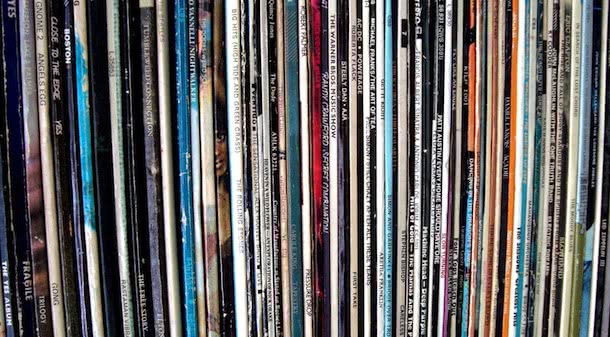 Toplička 35 Zvezdara
Toplička 35 ZvezdaraWhile this record house has no online presence to speak of it’s more than worth checking out in person. Centred towards metal, punk and rock it sells vinyls from these genres at pretty competitive prices. Band merchandise such as hoodies and t-shirts are also for sale here, along with badges and other forms of memorabilia. The Wall is open Monday to Friday from 12pm to 6pm and is located on the first floor of a mini shopping mall.
Catch Gramophonedzie At One Of His Local Shows

Known internationally as the maker behind ‘Why Don’t You’ which reached the #12 spot in the UK charts, Marko Milićević is one of Serbia’s most famous DJs. The producer has released a wide array of DJs and a string of singles to follow up the success of ‘Why Don’t You’, won a European MTV award and played festivals across the continent.
Australijski sajt preporučuje muzičku scenu Srbije
Srbija po svemu sudeći postaje popularna destinacija Evrope za ljubitelje muzike, pa je tako nedavno i australijski sajt ToneDeaf objavio vodič za obilazak Beograda.
tonedeaf.com.au Izvor:
Beta / Emil Vasev
"Poslednji teški periodi u istoriji Srbije počeli su devedesetih, kada je ova država prošla kroz raspad Jugoslavije, građanski rat, veliku inflaciju i visoku stopu nezaposlenosti.
Iz nekog razloga, predstava Zapadnog sveta o Srbiji nije se mnogo pomerila od tog turbulentnog vremena.
Uprkos svemu tome, lokalna muzička i umetnčka scena u Srbiji je cvetala u godinama koje su usledile. Zašto njen noćni život i dalje nije poznat poput onog u Parizu i Londonu, nikom nije jasno, ako imate u vidu da je čak i devedesetih Beograd uspeo, ne samo da održi groznicu klabinga, nego je i značajno ojača.
Kada su 1999. NATO bombe pale, Beograd je i tada održavao ogromne koncerte na gradskim trgovima i mostovima, a noćni klubovi radili su i danju.
Sada kad je to vreme iza njega, Beograd možda arhitektonski ne može da parira drugim evropskim prestonicama, ali njegov noćni život, svakako može.
Postoji bezbroj noćnih klubova u gradu i na čuvenim splavovima, za neupućene, klubovima na baržama.
Sluša se sve od hausa do progresiva i srpskog turbo folka, koji objedinjuje folk muziku sa elektro i pop elementima.
Iako je zastupljen i čitav spektar drugih žanrova, postoji i "underground" scena iznikla iz ožiljaka prošlosti.
Kanađanin rođen u Srbiji, producent Ensh opisuje muzičku scenu njegovog rodnog grada kao "niz malih klubova, kulturnih centara i readaptiranih prostora, poput Festa, KC Grada i Inex Filma".
Pre toga on na svom sajtu The 405 predstavlja BIGZ, kao napuštenu izdavačku kuću na više nivoa koja je transformisana u kreativni centar za umetnike.
U zgradi se nalaze razni prostori za probe, studija i klubovi.
Njegovo najinteresantnije zapaženje odnosi se na umetnike koji čine kreativnu scenu Beograda.
"Niko ko ima veze sa alternativnom scenom u Beogradu ne čini to zato da bi 'pravio muziku'. Oni samo žele da sviraju. To je ona ista strast koja privlači muzičare iz cele Evrope u Beograd. To deluje kao pravo mesto za takve ljude. To je kombinacija naivnosti, posvećenosi i radoznalosti koja bi najvećem muzičkom ciniku ulila tračak nade".
Kako to Ensh i veliki broj noćnih klubova pokazuju, beogradska muzička scena egzistira na brojnim frontovima.
Bilo da ste zainteresovani za ples ili želite da se utopite u avangardnu kulturu, prestonica Srbije je jedna od obaveznih evropskih muzičkih destinacija.
Pročitajte šta svaki ljubitelj muzike mora uraditi u Beogradu.
Odlazak na Exit festival

Foto: PR Exit
Uprkos tome što se organizuje u Novom Sadu, a ne u Beogradu, ovaj događaj je toliko integrisan u muzičku scenu zemlje, da ga ne možemo izostaviti. Njegovi počeci su takođe važni.
Osnovan 2000. kao studentski pokret koji se bori za demokratiju i danas je važan promoter društvene ravnopravnosti.
Održava se u trajanju od četiri dana i do sad je ugostio velika imena poput Arcade Fire, Portishead, Guns N'Roses, Bloc Party, Faith No More, Lily Allen, The Prodigy, Arctic Monkeys, Sex Pistols i Pulp.
Posetite splav
Kupite ploču u Yugovinyl-u
Slušajte Svi Na Pod! uživo
Ostanite do sitnih sati u 20/44
Ovde možete čudi razne vrste zvuka, od Detroit tehna, do soula, diska, fanka, hausa i dabstepa. Mesto je najpoznatije po "Disco Not Disco" večerima kada dozvoljava najboljim gradskim DJ-evima da eksperimentišu i iznenade publiku. Ulaz je jeftin, a leti pruža i divan pogled na stari Beograd.
Prošetajte Skadarskom ulicom

Foto: ZeWaren / Flickr.com
Takođe, možete da poslušate mnoge bendove i tamburaše. Ne zaboravite da poručite i neki specijalitet srpske kuhinje dok prolazite ovom pešačkom ulicom.
Kupite ploču u The Wall-u
Slušajte lokalni haus u klubu Sound
Najbolji beogradski DJ-evi i neke strane zvezde takođe su nastupali ovde. Uprkos tome što se ovde sluša haus, ovo je mesto više klase, pa se potrudite da se lepo obučete, kako biste ovde ušli.
Navratite u Kulturni centar Grad
Od nekadašnjeg skladišta iz 1884. preuređeno je u multifunkcionalnu zgradu u kojoj se održavaju izložbe, koncerti, debate, performansi, konferencije i radionice.
Пријавите се на:
Коментари (Atom)


